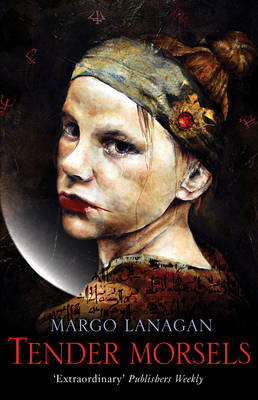Reviewed by nannah on
child abuse
rape
incest
Okay, so I'm not familiar with the fairytale "Snow-White and Rose-Red", so I can't say how closely this novel follows, varies, or fleshes out the original tale.
What I do know is that this book (like the other Margo Lanagan book I've read: The Brides of Rollrock Island) doesn't read like YA. It also . . . doesn't seem very appropriate for a young adult audience. I know people love to bend the rules of YA and all that, but still . . . this seems a bit much:
- there is a scene where a bear kills and eats a man (whose POV the reader experiences earlier). this scene is GRAPHIC--including skull crunching, etc.
- there is a scene where one of the main characters (as a young girl, then) feels excited by a bear (a man enchanted as a bear, but she doesn't know this--so he's literally a bear). She mentions in her POV how she doesn't know if she does or doesn't want his erect (bear) penis to touch her.
The book is about tragedy and recovery and deals with topics a mostly older audience would connect with. It also speaks from POVs that are racist, heteronormative, and prejudiced without being challenged, which isn't so great for young readers who 1. might already have these thoughts and now feel justified, or 2. now adopt these harmful ideas.
OK. On to the book itself.
Tender Morsels is a story told in two parallel worlds: the heavenly world Liga and her two daughters live in, and the "real" world she escaped. The plot comes together when the border between those two worlds starts to become less solid. Multiple characters come and go, and it starts to cause problems in both places, and for Liga's daughters, who never knew anything but happiness growing up in Liga's heaven.
In the beginning, all the different POVs were confusing. They're not announced with a separate chapter or name. Some use first person perspective, some third person. As the book went on, it was easier to read, but the reason for using this technique is a little confusing. The characters in the "real" world used first person, but when the characters from "heaven" came over into the real world, they retained the third person perspective, which confused me. Eventually I just accepted it and read on.
As always, Margo Lanagan's writing is perfection. I haven't read anything better than her prose. Honestly, she makes the best sentences and sentence flow. If you want to read good prose, read Margo Lanagan.
However, I see "dark" all over the tags and reviews for this book. But why does "dark" for fictional worlds in any medium always mean in increase of violence against women? It always feels like a lack of creativity on the creator's part.
The world here is one that's obviously Western European (inspired by Germany, probably, since Snow-White and Rose-Red is a Grimm story), but I could've done without the anti-poc descriptions like "foreigner" and dialogue like "why is he sooty-faced?", etc.
There's also the hatred of little people that seems completely out of nowhere? The book makes fun of the character, Collaby, in the narratives of the good people in the book. And Collaby, of course, is one of the awful characters, driven by endless greed. He becomes a nightmarish picture for one of Liga's girls, who then thinks ill of all little people. This idea is never corrected.
I'm a little disappointed by the resolving of the climax. The characters I've come to know don't need to do anything more than a social call, and the problem is fixed. It seems far too easy and convenient.
And after this climax (which hardly feels like one? Is there a climax in this book? It really doesn't follow a recognizable format--at least to me, not that that in itself is a bad thing). But things drag on at the end. When I thought the book was wrapping up, it evidently wasn't, because things kept happening. I ended up getting really impatient for the book to just be over.
Overall, the concept of this book is so cool, but the book itself didn't do it for me (even as a surviver myself).
Reading updates
- Started reading
- 1 February, 2016: Finished reading
- 1 February, 2016: Reviewed
